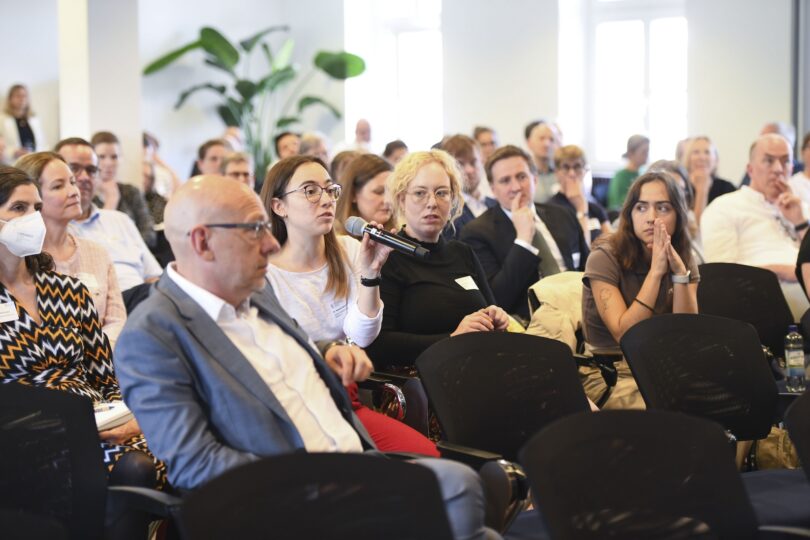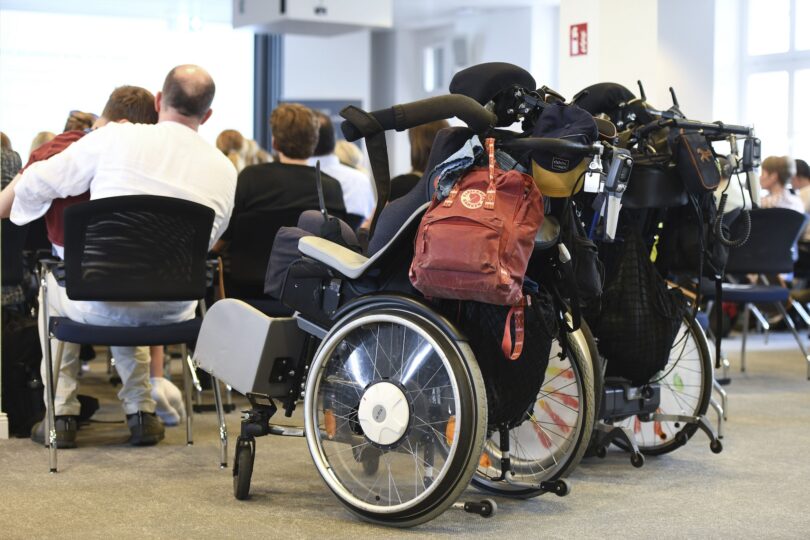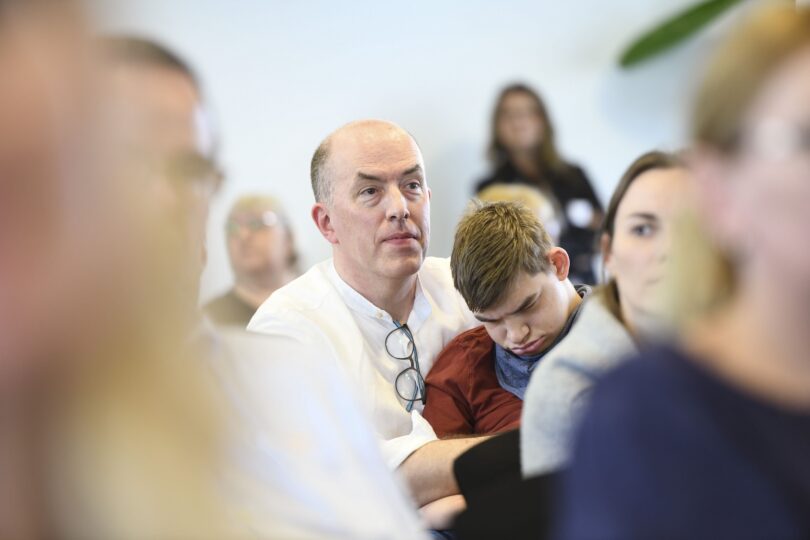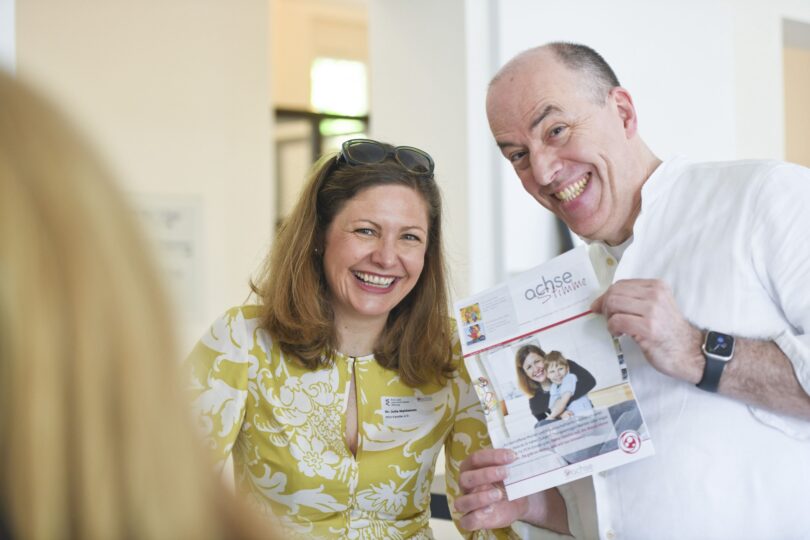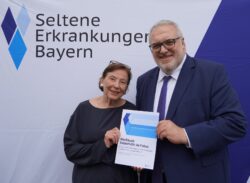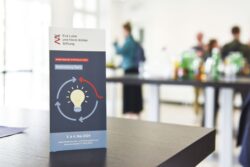
Review of Day 1: Friday, May 3, 2024
In her opening address, Eva Luise Köhler pointed out the need to rethink rare diseases and find innovative solutions for research and care: “We have to think ahead in order to set the course for the personalized precision medicine of tomorrow, wisely and with foresight!” The Chair of the Board of Trustees of the Eva Luise and Horst Köhler Foundation underlined the importance of collaboration and the exchange of diverse perspectives. She invited all participants to contribute their ideas, enthusiasm and creativity in order to overcome the challenges and shape a better future for people with rare diseases.
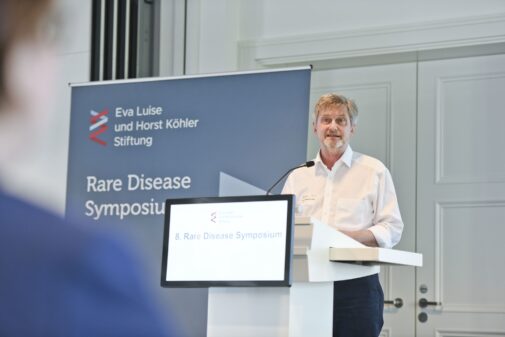
Artificial intelligence and rare diseases
Prof. Dr. Klaus Robert Müller, TU Berlin and Director of the Berlin Institute for the Foundations of Learning and Data (BIFOLD), launched the two-day event with a keynote speech. As a pioneer of machine learning and developer of artificial intelligence methods, he provided a vivid explanation of the basics of digital pattern recognition to non-expert participants. Digital pattern recognition is essential for machine learning and the processing of data in neural networks. Professor Müller pointed out the risk of data misinterpretation and made it clear that simply increasing the amount of data does not guarantee better resolution and precision. He explained why pattern recognition for rare and very rare diseases remains a major challenge: Even if the quantity of data is increased through intensive collaboration, the criterion of “rare” cannot be resolved – “rare just remains rare”. Prof. Müller believes that further basic research, including in computer science, is required before more precise diagnoses can be made using suitable methods, even with small numbers of cases.
Session1: Epidermolysis bullosa, the butterfly disease
In epidermolysis bullosa (EB), the skin is as fragile and vulnerable as the wings of a butterfly: Even slight pressure can lead to injuries and painful blistering. Wounds, infections and scarring are the result; in addition to the skin, other organs can also be affected. In an impressive overview lecture, Prof. Dr. Leena Bruckner-Tuderman, University Medical Center Freiburg, referred to by co-lecturer Michael Hund as the “Godmother of those affected by epidermolysis bullosa”, presented the clinical spectrum of this severe dermatological disease. Since she was awarded the Eva Luise and Horst Köhler Research Award in 2009, knowledge of the genetic basis has increased considerably. First successful symptomatic therapies are already being used. A significant milestone is the FDA approval of topical gene therapy (B-VEC) for dystrophic EB with mutations in the COL7A1 gene. TGF-β inhibitors, for example losartan, improve EB-induced fibrosis. Even if it will still be a while before gene editing and targeted gene therapies can causally address the skin, the largest organ in the human body, symptomatic cell and gene therapies, of which more are in development, are already significantly improving the quality of life of EB patients.
Andreas Miller, Deputy Chairman of the German self-help organization IEB e.V. DEBRA, contributed the important perspective of EB patients. In his convincingly authentic and self-confident presentation, he also shared personal experiences with junctional EB. Andreas Miller described how caring for wounds and changing dressings has taken several hours a day since early childhood. It became very clear that EB is a constant companion in the lives of patients and significantly restricts their participation. Even in a healthcare system based on solidarity, as in Germany, there are many barriers and challenges to care. Intensive exchange within the DEBRA community and targeted research are important here. The patients have high hopes for these measures. Andreas Miller was able to impressively demonstrate to the audience what people with EB do on a daily basis to maintain bodily functions that healthy people often take for granted.
In the final presentation of the session, Michael Hund, CEO of EB Research Partnership from New York, inspired the participants with a highly motivating talk. He impressively outlined the immense need for research based on the different facets of the clinical picture of EB. Using striking metaphors for the necessity of courage and willingness to take risks, he illustrated the need to look to the future and act decisively: “ Rooms like this are changing the world. We can bring about real change,” so his firm conviction. Michael, an economics graduate from Yale University, and his team at EB Research Partnership have developed a new business model for funding translational research into EB. By providing funding from civil society, therapy development projects are financed up to the phase 2 stage and then handed over to the pharmaceutical industry. In contrast to academic institutions and research institutes, the pharmaceutical industry has the capacity to carry out the necessary studies. The profits generated by the sale are used entirely to fund new research projects. In this way, EB Research Partnership has been able to initiate ongoing research for several years and contribute to remarkable research successes.

Session 2: The importance of patient participation in research
The involvement of patients in medical research should not be limited to the provision of data and participation in clinical studies. Dr. Julia Matilainen, a member of the PCH family, the German-speaking self-help association for families with children with pontocerebellar hypoplasia, described the importance and success of comprehensive participation – starting with research on natural history, through participation in the conception of projects to the acquisition of third-party funding. In her presentation, which was both personal and professionally focused, she demonstrated the important contribution that patients can make to research: “The accumulated specialist knowledge lies in the patients’ families and not in publications, which often lag years behind actual practice in terms of the level of knowledge.“ Particularly in the case of rare diseases, thorough observation and close support are extremely important and doctors are reliant on information from families. Julia Matilainen stressed that this important work should not just rest on the shoulders of a few. Better funding and support for patient organizations is therefore essential. She also considers the development of overarching frameworks and toolboxes to be important: “Not everyone has to reinvent the wheel. Only standardization and synergies will unleash the potential to find and use treatment options for many rare diseases.”
Dr. Valerie Kirchberger, Chief Medical Officer and Co-Managing Director of Heartbeat Medical Solutions GmbH, also addressed the great importance of the patient perspective in her presentation. She explained Patient-Reported Outcome Measures (PROMs) as instruments that use standardized questionnaires to collect comprehensive information to assess the quality of healthcare. For common diseases, it has already been shown that the use of PROMs not only increases quality of life, but also lifespan. But Valerie Kirchberger believes there is great potential also for rare diseases: for example, the effects of innovative diagnostics or consultation in centers for rare diseases or other facilities can be recorded and integrated into clinical research. Aggregated data also helps in estimating the potential individual success of a possible treatment. The integration of PROMs into transparency registers and into the National Register for Rare Diseases NARSE will be a task to be accomplished in the near future. Valerie Kirchberger emphasized that the committed “rare disease community” with informed and interested patients is the best prerequisite for valuable information.The challenge posed by the heterogeneous and smaller patient groups should not deter anyone.Her appeal: “Keep it simple. But do it. Data is vital.”
The aspect of evidence through first-hand information on patients’ experiences and perspectives is an important part of patient-centered ethics, as Prof. Dr. Nikola Biller-Andorno, Director of the Institute for Biomedical Ethics and History of Medicine at the University of Zurich, explained in her subsequent lecture. Since 2021, she and her team have been involved in the interdisciplinary research project ITENERARE, which supports the development of innovative therapies in the field of rare diseases with medical, legal, scientific, theological and social science expertise. In order to gain a better understanding of the (daily) challenges faced by people with rare diseases in Switzerland, Nikola Biller-Andorno and her team conducted interview studies using the “DIPEx” methodology. The results are published on the Internet and in databases, illustrated with text, video and audio excerpts. The websites are freely accessible and are intended to be a resource for information and support for patients as well as a stimulus for improvements in healthcare. Nikola Biller-Andorno believes there is great potential in sharing health experiences. AI tools make it possible to accelerate parts of data processing and offer opportunities for developing innovative teaching materials and bringing the results into the political discourse. An important prerequisite here is the guarantee of ethical standards, data security and legal certainty in order to create trust among both patients and researchers.
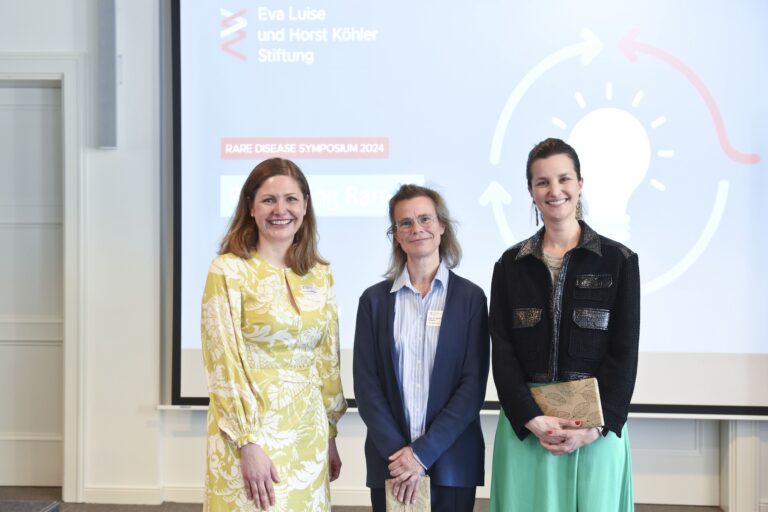
The panel discussion that followed focused on the future: Moderated by Annette Grüters-Kieslich, Michael Hund, Prof. Dr. Tobias Cantz (Hannover Medical School), Prof. Dr. Christopher Baum and Prof. Dr. Peter Robinson (both Berlin Institute of Health at Charité) discussed the opportunities and challenges of new methods and technologies in the field of rare diseases. It became clear that enormous medical progress is in sight, but not yet within immediate reach. In order to pave the way for the precision medicine of tomorrow, a massive use of resources and the creation and utilization of synergies are required, as well as a willingness to not only collect data in a structured manner, but also to share it. New forms of cooperation such as the National Strategy for Cell and Gene Therapy and the development of the National Register for Rare Diseases NARSE seem promising. But more speed is needed in all areas, as Annette Grüters-Kieslich emphasized: “People with rare diseases have no time!” Bureaucratic and structural obstacles must be overcome in order to attract international investors and supporters. The current high costs will fall through standardization and the development of platform technologies, according to the panellists. There was agreement that good cooperation between academia and the pharmaceutical industry is necessary and that new paths must be opened up in private-public partnerships, public funding and, in particular, civil society involvement so that promising approaches do not get stuck at the beginning. If the political framework conditions are designed wisely, the future will appear in a positive light according to the panel discussants: “Keeping up the pace in developing and funding, technology will bring us there.”
Read the review of the second day of the event: Review 8th Rare Disease Symposium 2/2
More pictures by photographer Andrea Katheder can be found here: Album 8th Rare Disease Symposium



